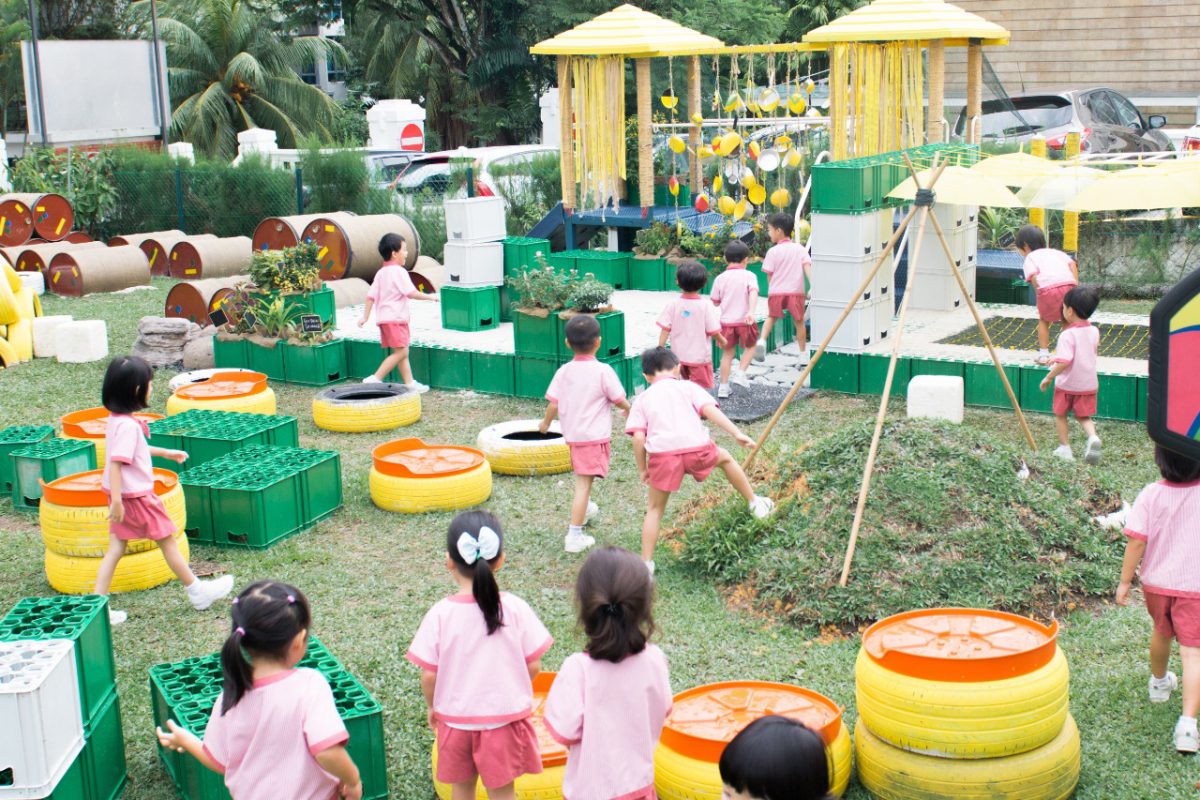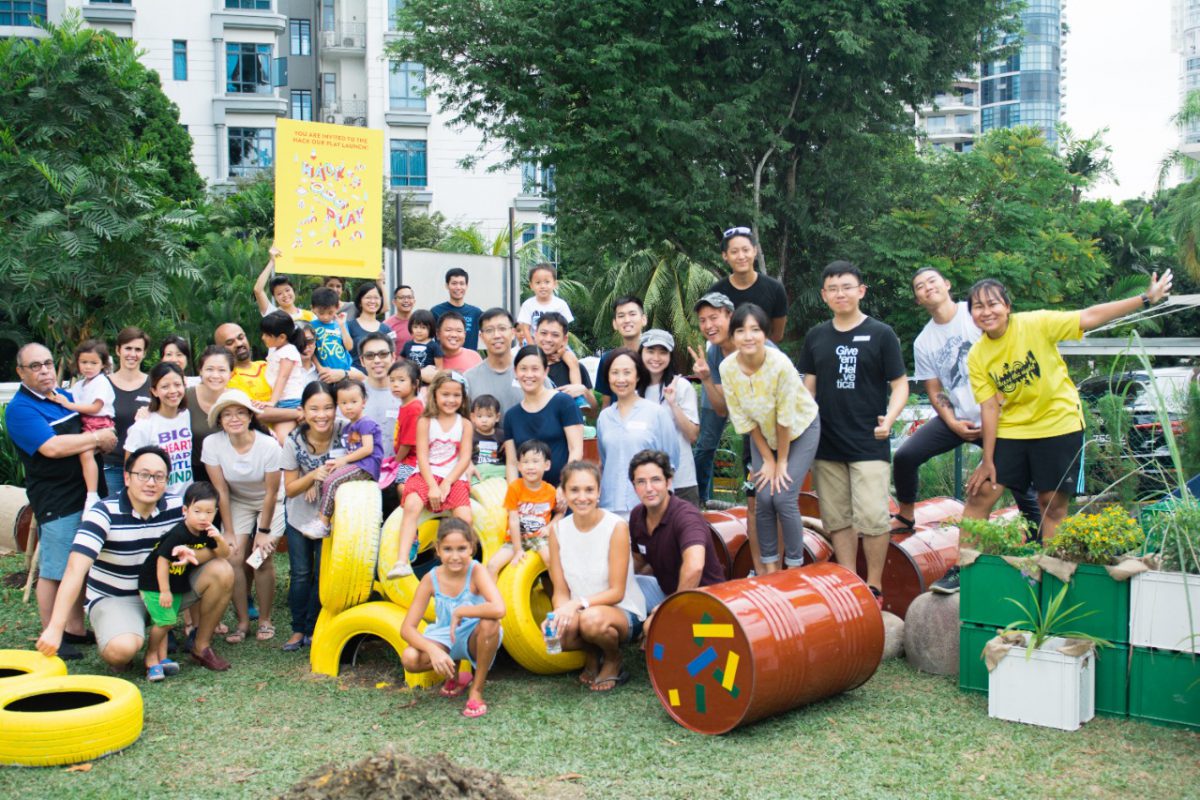
Keep up with our latest news and projects!

Most playgrounds today are bought straight off of a catalogue, resulting in cookie-cutter and standardised play experiences. Given the importance of play in a child’s development, we believe that there is a need to rethink how we design and build play spaces in Singapore. Particularly, we believe that children, educators, and parents should be included in the process of designing play spaces so that each one can become a tailor-made experience that meets their own needs and learning objectives.
Hack Our Play (HOP) is Singapore’s first participatory, community-built play space at St. James’ Church Kindergarten (SJCK). It is an initiative that lets children, educators, and parents co-create their very own play space, from start to finish. Together, they will be able to conceive, create and curate a safe and unique play experience while also fostering stronger bonds and a shared sense of pride and excitement through the process. This new model of design demonstrates how a play space can be created and transformed by everyone who uses it. The use of non-standard structures, recyclables, and everyday materials in its construction not only encourages non-linear thinking but also allows the HOP space to be reconfigured over time.
We started by building relationships with people who are experts in the landscape of play and engaging in thorough literature review and case study research. We also interviewed educators, parents, and children to gather insights on their experience of play in Singapore.
The typical process of creating a playground usually only involves children in the last stage, as users. We wanted to begin with children and the community that surrounds them. To gain a deeper understanding of their needs, challenges and opportunities, we held engagement activities such as Crayon Conversations, One-day Pop-Up Play and Field Observations of the existing playgrounds in Singapore. In a series of workshops, children, parents, educators, and volunteers helped to build components of the play space by painting tyres, decorating barrels, pots and pans, and planting greenery.



HOP asked children and parents from SJCK, as well as members of the public, what they value most in a play environment. The children preferred spaces that let them play comfortably in groups or alone. They loved colours and wanted to have the freedom to choose what and how to play. They also wished for spaces where they could indulge in their fantasies and imagination.
Parents wanted a balance of natural and man-made elements, as well as sensory stimulation areas that were safe yet challenging. They also appreciated the inclusion of comfortable spaces for them to rest.
With this in mind, the HOP play space is designed to ‘evolve’ into what the children want it to be. It has loose elements for children to build upon, and its green wall integrates nature into the play area. The mix of fixed structures and loose elements provides a variety of play and rest spaces for children and accompanying adults.
The design also reflects input from experts, including architects, designers, playground suppliers and early childhood educators on technical and safety aspects and how to encourage different types of play behaviour.
Regular playground |
HOP play space |
|
Creation process |
Designers and experts choose the outcome.
Children, as main users, are not part of the design development. They are consumers of the end product. |
Participatory design:
Playspace is co-created with children / educators / parents, making the process as important as the product. The benefits:
|
Structures |
Only fixed structures:
|
Fixed and movable structures so play space is dynamic, constantly evolving:
|
Materials |
Built from scratch from new raw materials. | Built from everyday recyclable / used materials:
|
Learning for children / educators / parents |
Predictable design offers fewer avenues for creativity and therefore can limit learning. | Brings learning to broader and deeper levels for both children and educators / parents. |



Let children enhance their learning by doing. By active engagement they can:
Educators and parents may assume children will learn in a safe and secure environment like a classroom. Show educators and parents that they can enhance their teaching and parenting skills as they continuously help to extend the children’s development through play. For example, they:
